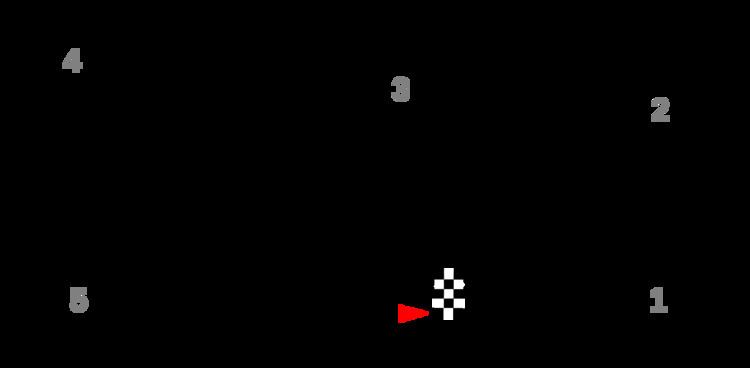Official name Northern 300 | ||
 | ||
Date July 14, 1968 (1968-July-14) Location Trenton Speedway, Trenton, New Jersey Course Permanent racing facility
1.000 mi (1.609 km) Distance 300 laps, 300 mi (500 km) Weather Warm with temperatures approaching 82.9 °F (28.3 °C); wind speeds up to 9.9 miles per hour (15.9 km/h) | ||
The 1968 Northern 300 was a NASCAR Grand National Series (now Monster Energy NASCAR Cup Series) event that was held on July 14, 1968, at Trenton Speedway in Trenton, New Jersey.
Contents
Background
The first race at the Fairgrounds was held on September 24, 1900, but there was no further racing there until 1907. Regular racing began in 1912 and continued until 1941. A new 1 mile dirt oval was opened in 1946. In 1957 the track was paved. It operated in that configuration until 1968 when the track was expanded to 1.5 miles (2.41 km) and a "kidney bean" shape with a 20° right-hand dogleg on the back stretch and a wider turn 3 & 4 complex than turns 1 & 2. The track closed in 1980 and the Fairgrounds itself closed 3 years later. The former site of the speedway is now occupied by the Grounds for Sculpture, a UPS shipping facility, and the housing development known as "Hamilton Lakes".
Summary
Three hundred laps were done on a paved oval track spanning 1.000 mile (1.609 km). The total time of the race was three hours and twenty-two minutes; LeeRoy Yarbrough defeated David Pearson by more than one lap in front of 16800 people. Speeds for the race were: 89.079 miles per hour (143.359 km/h) as the average and 103.717 miles per hour (166.916 km/h) as the pole position speed. Five cautions were waved for twenty-eight laps. Retired Canadian driver Frog Fagan participated in this race. Total winnings for this race were $17,725 USD ($122,073.52 when considering inflation).
Bobby Allison was driving a 1966 Chevrolet Chevelle to this event. While he flourished early on as an independent race car driver, he quickly floundered after being able to compete against NASCAR racing legends like LeeRoy Yarbrough and David Pearson on a consistent basis.
Gene Black, Blaine Kauffman, and David Mote would end their top-level professional stock car careers at this event. The transition to purposely-built racers began in the early 1960s and occurred gradually over that decade. Changes made to the sport by the late 1960s brought an end to the "strictly stock" vehicles of the 1950s; most of the cars were trailered to events or hauled in by trucks.
Finishing order
† signifies that the driver is known to be deceased
* Driver failed to finish race
